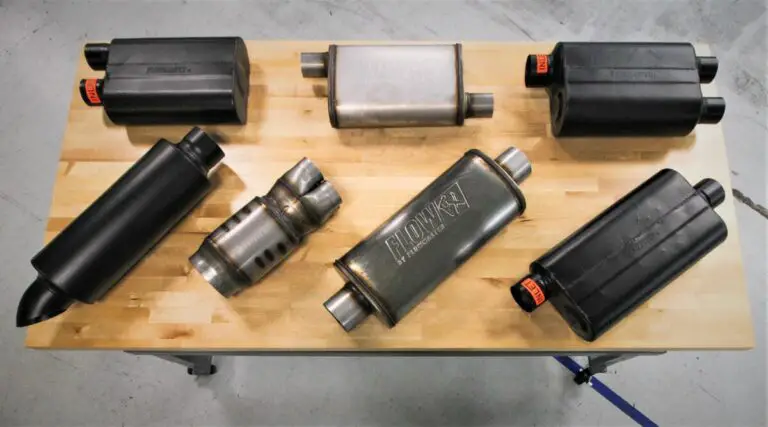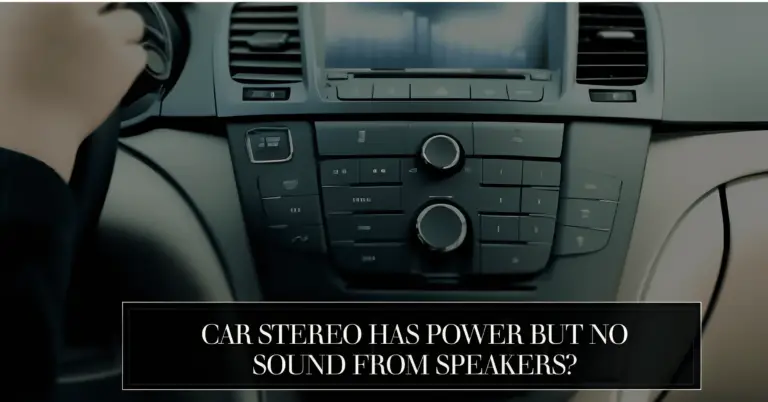Water in Headlight: Causes & Fixing Methods

Water in a headlight can be a frustrating problem for car owners. It not only affects the appearance of the vehicle but also impairs the functionality of the headlight. Moisture in the headlight can cause the bulb to malfunction, reducing visibility while driving. In this article, we will discuss the causes of water in headlights and how to fix it.
There are several reasons why water can get into the headlight. One of the most common causes is a damaged seal. The seal around the headlight lens can become cracked or loose, allowing water to enter. Another reason could be a crack in the lens or housing, which can also allow water to seep in. Additionally, extreme weather conditions such as heavy rain or snow can also contribute to the problem.
Table of Contents
What Causes Water in Headlights?
Water in headlights can be a frustrating problem for car owners. It can reduce the effectiveness of the headlight and even cause damage to the electrical components. Understanding the causes of water in headlights can help prevent this problem from occurring.
Condensation
Condensation is the most common cause of water in headlights. It occurs when moisture in the air comes into contact with a cold surface, such as the lens of a headlight. This can happen when the temperature inside the headlight housing is lower than the temperature outside.
Damaged Seals
Another cause of water in headlights is damaged seals. The seal between the lens and housing of the headlight is designed to keep out water and other debris. If the seal is damaged or worn, water can seep into the headlight housing. This can happen due to age, exposure to extreme temperatures, or physical damage.
Cracked Lens
A cracked lens can also cause water to enter the headlight housing. Even a small crack can allow moisture to seep in, especially during wet weather. Cracks can occur due to physical damage, exposure to extreme temperatures, or simply due to age.
It’s important to address the cause of water in headlights as soon as possible to prevent further damage. By following the steps to remove moisture from headlights or fixing the damaged seal or lens, car owners can ensure their headlights remain effective and safe to use.
How to Fix Water in Headlights
If you notice water or moisture inside your headlight, it is important to fix the issue as soon as possible to prevent further damage to the headlight and ensure optimal visibility while driving. Here are some steps you can take to fix water in headlights.
Remove the Headlight Assembly
Before you can fix the water in your headlight, you need to remove the headlight assembly from your vehicle. The process for removing the headlight assembly varies depending on the make and model of your vehicle. You can refer to your vehicle’s owner’s manual or search online for specific instructions.
Dry the Headlight
Once you have removed the headlight assembly, you need to dry the headlight. You can use a hairdryer or a heat gun to dry the headlight. Be sure to use a low heat setting to avoid damaging the headlight. Alternatively, you can leave the headlight in a dry, warm place for a few hours to allow the water to evaporate.
Seal the Headlight
After you have dried the headlight, you need to seal it to prevent water from getting inside again. You can use silicone sealant or headlight sealant to seal the headlight. Apply the sealant around the edges of the headlight and any other areas where water could enter.
It is important to note that if the headlight is cracked or damaged, it may need to be replaced rather than repaired. Additionally, it is important to ensure that the headlight assembly is properly sealed when reinstalling it on your vehicle to prevent water from getting inside again.
Preventing Water in Headlights
To avoid water getting into your headlights, it’s important to take preventive measures. Here are some ways to prevent water from getting into your headlights:
Check Seals and Gaskets Regularly
One of the main causes of water in headlights is a damaged or worn-out seal or gasket. It’s important to check these regularly to ensure they are in good condition. If you notice any signs of wear or damage, replace them immediately.
Avoid High-Pressure Car Washes
High-pressure car washes can force water into small cracks and crevices, including the seals and gaskets of your headlights. It’s best to avoid these types of car washes and instead opt for a gentle hand wash or a touchless car wash.
Avoid Driving Through Deep Water
Driving through deep water can also cause water to get into your headlights. If you must drive through water, take it slow and avoid driving through water that is deeper than the bottom of your headlights.
Conclusion
Water in headlights is a common problem that can be caused by various factors, including cracks in the lens or housing, damaged seals, or extreme weather conditions. It can lead to reduced visibility and even damage to the headlight if not addressed promptly.
Fortunately, there are several ways to fix water in headlights, including using a hairdryer or desiccant bags to remove moisture, replacing the headlight gasket or seal, or even replacing the entire headlight assembly if the damage is severe.
By following the steps outlined in this article and consulting with a professional if necessary, car owners can effectively address water in headlights and ensure their safety on the road. It is important to regularly inspect headlights for any signs of damage and address any issues promptly to prevent water from getting inside.
FAQs
Can I still drive my car with water in the headlight?
Yes, you can still drive your car with water in the headlight. However, it is not recommended as the water can cause damage to the electrical components.
How long does it take to fix a headlight with water in it?
. The time it takes to fix a headlight with water in it can vary depending on the severity of the issue. It can take anywhere from a few minutes to a few hours.
What causes water in the headlight?
There are several causes of water in the headlight, including a damaged seal, cracked lens, or a faulty headlight assembly.
Can I prevent water from getting into my headlight?
Yes, you can prevent water from getting into your headlight by ensuring that the seal is intact, avoiding high-pressure car washes, and parking your car in a covered area during heavy rain.
Is it safe to use a hairdryer to remove water from the headlight?
It is not recommended to use a hairdryer to remove water from the headlight as it can damage the electrical components. Instead, use a towel or leave the headlight to dry naturally.
Can I use silicone to seal the headlight?
Yes, silicone can be used to seal the headlight. However, it is important to use the correct type of silicone to avoid damaging the headlight assembly.







